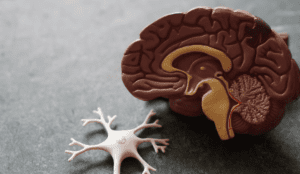For decades now, scientists have been trying to figure out what truly causes cancer and other chronic diseases – and while there still isn’t one answer yet, there is growing evidence to suggest that exposure to environmental toxins can increase the risk of the diseases. Many of these toxins are present in our air, water, and food, and can accumulate in the body over time. There is also concern that exposure to electromagnetic fields (EMFs) may contribute to the development of cancer alongside these toxins.
Environmental toxins are substances that are released into the environment by human activity, such as industrial processes and the use of pesticides and other chemicals, resulting in negative environmental health. These toxins can accumulate in the environment and the bodies of living organisms, including humans. Exposure to environmental toxins has been linked to a range of chronic diseases, including cancer, cardiovascular disease, and respiratory problems.
One of the ways how environmental toxins can contribute to the development of cancer is through their ability to cause DNA damage. This damage can lead to mutations in genes that control cell growth and division, which can in turn lead to the uncontrolled growth of cancer cells. Exposure to certain toxins, such as asbestos and benzene, increases the risk of certain types of cancer, including lung cancer and leukemia.
And a quick recap – EMFs are a type of radiation generated by electronic devices such as cell phones, Wi-Fi routers, and power lines. While the evidence on the effects of EMFs on cancer is still limited, some studies such as this one have suggested that exposure to high levels of EMFs may increase the risk of certain types of cancer, including brain tumors and leukemia.
There is also concern that exposure to EMFs may contribute to the development of cancer in conjunction with environmental toxins:
- One theory is that exposure to EMFs may weaken the body’s immune system, making it less able to defend against the damage caused by environmental toxins. This could lead to an increased risk of cancer and other chronic diseases.
- Another theory is that exposure to EMFs may increase the activity of certain enzymes in the body that can convert environmental toxins into more toxic forms. This could potentially increase the damage caused by these toxins and contribute to the development of cancer.
While the evidence on the connection between EMFs and cancer is still limited, there are still cautionary steps that we can take to reduce their exposure to both environmental toxins and EMFs.
These include eating a healthy diet free from pesticides and other chemicals, drinking clean water, and avoiding exposure to air pollution. Additionally, we can reduce our exposure to EMFs by using electronic devices less frequently, keeping devices away from the body, and turning off Wi-Fi routers and other electronic devices when not in use.
Therefore, environmental toxins are known to increase the risk of chronic diseases such as cancer, and there is concern that exposure to EMFs may contribute to the development of cancer in conjunction with these toxins. While the evidence on the effects of EMFs on cancer is still limited, we can all take steps to reduce our exposure to both environmental toxins and EMFs to reduce the risk of developing cancer and other chronic diseases. By being aware of the potential risks and taking steps to reduce exposure, we can all help ensure their long-term health and well-being.






